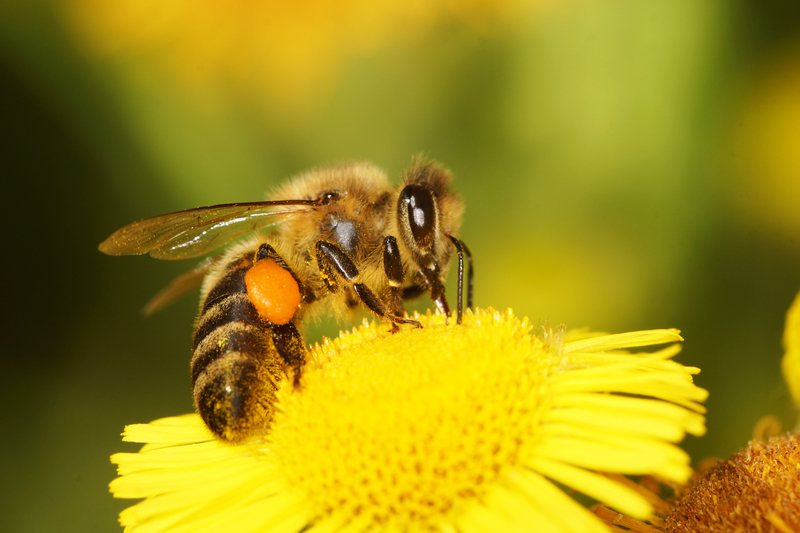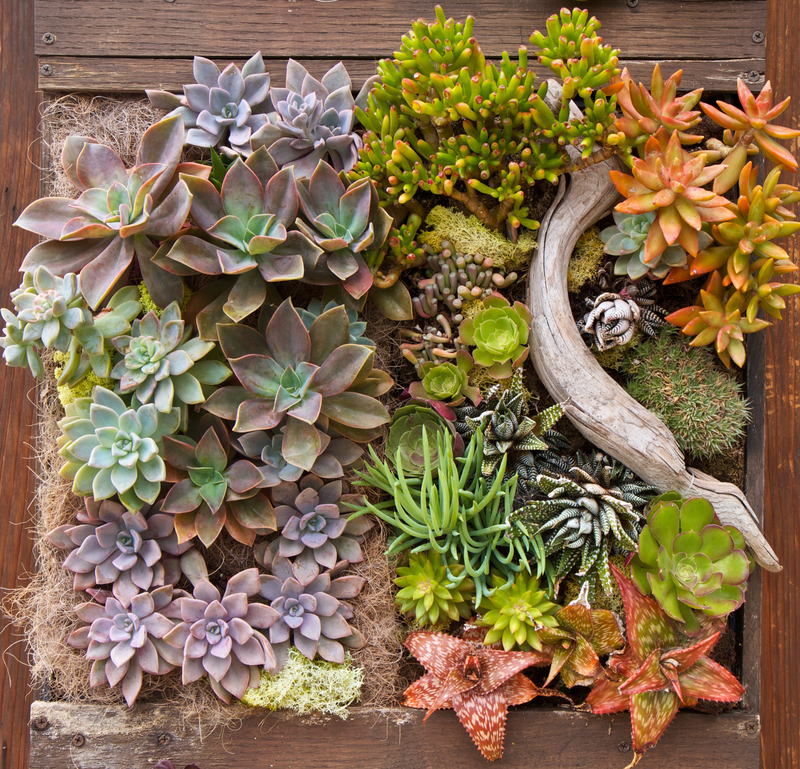Designing Garden Paths for Four-Legged Explorers
Posted on 01/07/2025
Designing Garden Paths for Four-Legged Explorers
Garden paths do more than connect spaces--they can shape how everyone, including our beloved pets, experience the garden. Dogs and cats have their own habits, interests, and comfort needs which differ from our own. Understanding these animal-friendly requirements unlocks a whole new world of landscape design. Let's explore how to create garden paths that are not only beautiful but a delight for your four-legged explorers.

Why Pet-Friendly Garden Paths Matter
Our pets are avid explorers, detectives, and sometimes nap connoisseurs of the yard. When we intentionally design garden paths for dogs, cats, and other furry friends, we support their:
- Physical Exercise: Engaging paths encourage running and walking.
- Mental Stimulation: Curves, scents, and textures keep pets entertained and happy.
- Personal Safety: Secure and non-toxic materials reduce risks.
- Shared Enjoyment: Beautiful, functional spaces are enjoyed by humans and animals alike.
A pet-friendly garden path is the bridge between nature and nurture, making your backyard a haven for relaxation and adventure for all species.
Understanding Your Pet's Garden Behavior
To build the ideal path for your four-legged explorers, start by observing their preferences:
- Do they patrol along fences, borders, or favorite trees?
- Is there a path they've worn through the grass already?
- Do they love sunny spots or seek shade?
- Are there areas they dig or like to hide?
*Dogs* especially tend to follow "patrol routes", while *cats* might zigzag or hug the edges. Take notes--you'll want your new garden paths to integrate their natural movements, not disrupt them.
Key Principles of Garden Path Design for Pets
Safety First: Choosing the Right Materials
Material selection is the bedrock of a successful pet-friendly path. Consider these safe, durable options:
- Flagstone: Smooth and cool underfoot. Set stones close together for small paws.
- Decomposed Granite: Pack tightly to avoid tracking and digging.
- Pavers: Rounded edges are kinder to paw pads than sharp cuts.
- Mulch: Choose cedar or pine but avoid cocoa mulch--it's toxic for dogs.
- Grass or Clover: Gentle and resilient for running and lounging, though high-traffic areas may wear quickly.
*Avoid gravel with sharp edges, chemicals, or any slippery surfaces.* Also, be mindful of thorny, spiky, or poisonous plants lining the paths.
Width and Accessibility
Width matters. Design a garden path wide enough for your dog (or a pair of racing pups) to pass comfortably without trampling plants. As a guideline:
- Small dogs or cats: A 12-18 inch-wide path
- Medium to large dogs: 24-36 inches
If you'll be walking side by side, go even wider for shared strolls!
Curves, Loops, and Adventure Routes
Four-legged explorers love a route with mystery and play. Avoid dead-straight, harsh lines. Instead:
- Incorporate gentle curves to meander through your garden's interesting spots.
- Loops let pets patrol without backtracking.
- Branching paths encourage exploration--think hidden corners, flower beds, or shady retreats.
Curved paths feel more natural and keep your garden looking lush. Your pet gets variety--and so do you!
Integrate Scent and Texture for Stimulation
Pets navigate with noses and toes. Enrich their adventure by planting aromatic herbs (like lavender, thyme, or mint) along the garden trail. Textural variety underfoot keeps their senses engaged:
- Cool stone for hot days
- Soft grass patches for rolling
- Mulch beds for digging or hiding toys
Variety is the spice of life--especially for pets!
Microclimates: Shade, Sun, and Shelter
Both dogs and cats seek different climates at different times. Offer:
- Sunny rest stops for warmth
- Shady retreats under trees or pergolas
- Windbreaks or leafy hideaways for privacy and comfort
Combine overhead canopies, tall grasses, and low shrubs to ensure your garden paths provide options whatever the weather.
Smart Features for Pet Paths
Doggy Viewing Platforms
Is your dog a vigilant watchdog? Place a flat-topped stone or low bench along a garden path at key lookout points--a gentle rise where they can survey their domain and "patrol" for passing squirrels and neighbors.
Pet Tunnels and Hiding Spots
Cats and smaller dogs adore a sense of privacy. Try:
- Dense grass tufts or shrubby "caves" by the edge of a path
- Covered arches with climbing vines
- Hollow logs or low, leafy branches to dash through
Every path feels like an adventure when mystery and discovery abound.
Digging Zones and Play Patches
If your pet is a digger, save your flower beds by offering a dedicated "dig pit" or play area along the route. Fill it with:
- Sand or soft soil (with buried toys or treats!)
- Wood chips (avoid cedar for cats, as it can irritate them)
- Safety fencing or stone edges to keep digging contained
Positive redirection will save your garden--and delight your pet.
Water Bowls and Drinking Stations
Install a permanent or portable water dish at regular intervals if your garden paths loop through large yards. On very hot days, a shaded pet fountain could be the highlight of the journey.
Lighting for Night Walks
Solar stake lights or low-voltage path lighting make evening explorations safe and visually appealing for both humans and pets. Soft illumination outlines the trail without disturbing nocturnal visitors.
Pet-Friendly Planting Along the Path
Non-Toxic Plants
Choosing plants for your garden paths is crucial. Many common ornamentals are dangerous for pets if ingested. To be safe, stick with these favorites:
- Catmint (Nepeta), Spider plant, Rosemary, Thyme
- Creeping thyme, chamomile, and clover for low groundcovers
- Fescue grass or native grasses for durable, pet-safe running space
*Avoid lilies, foxglove, yew, sago palm, and rhododendron--these can be extremely harmful to dogs and cats.*
Durable and Hardy Varieties
Prioritize plants that recover from playful paws. Lamb's ear, ornamental grasses, and sunflowers can handle some ruffling. Group delicate flowers in raised beds or behind borders to minimize trampling.
Sensory Experience for Pets
Add scented herbs to engage your pet's powerful nose. Consider "cat gardens" with catmint (which attracts kitties) and "dog gardens" with wolf-resistant greenery and room to roam.
Maintenance Tips for Pet Pathways
Regular Inspection
Daily or weekly walk-throughs let you spot hazards:
- Loose stones or slipping hazards
- Burrs, thorns, or toxic weeds
- Damaged fencing or exposed edging
- Pet waste--always pick up to keep play zones clean
Paw Washing and Entryways
If muddy paths are an issue, place a paw-washing station or towel rack at commonly used exits. Coir mats and gravel drainage in high-traffic areas help reduce muddy pawprints in the house.
Mulch and Erosion Control
Refresh mulch periodically, especially if paths see a lot of canine traffic. For sloped areas, use stabilizing grids beneath gravel or stone to prevent washouts.
Sample Designs for Inspiring Pet-Friendly Garden Paths
1. The Woodland Wanderer
A winding flagstone path curves through native ferns and shade trees, with bark mulch side strips for soft paw landings. Hide a log tunnel and water bowl at the far end.
2. The Meadow Loop
Decomposed granite trail forms a circular track--perfect for zoomies--fringed by clover, thyme, and spots of sunny grass. In the center, a shady pergola houses a pet bed and easy-to-clean drinking fountain.
3. The Courtyard Patrol
Pavers create a border patrol route along a fence, with peephole windows at nose height so your dog can watch the street. Cat-safe plants and climbing vines soften the line, and solar path lights illuminate evening rounds.
Common Mistakes to Avoid When Designing Paths for Pets
- Narrow, tight corners that force pets to trample beds
- Sharp or hot surfaces (metal, untreated concrete)
- Toxic mulches or plants within reach
- Poor drainage leading to muddy, impassable tracks
- Lack of shade on long stretches of exposed path
Remember: your pet's comfort and safety come first.

Encouraging Responsible Exploration and Training
It's a good idea to introduce new garden paths to your pet slowly. Use rewards to encourage them to stay on the paths instead of shortcutting through beds. For dogs, consider positive training cues:
- Lead with treats along the path's edge
- Use verbal cues like "Path!" or "Garden walk"
- Install low border fences to establish boundaries, at least during the early weeks
Cats may need more time and natural curiosity to adopt new garden corridors, but if you line them with favorite plants (catnip or valerian), they'll soon find their way.
Conclusion: Celebrating the Joy of Pet-Friendly Garden Paths
Designing garden paths for four-legged explorers transforms your outdoor space into a sanctuary for both people and pets. With soft, safe surfaces, stimulating routes, and thoughtful plantings, you invite your furry friends to enjoy the garden every bit as much as you do.
By tailoring our landscape architecture to their natural instincts--patrolling, sniffing, playing, and lounging--we build a backyard abundant with adventure and comfort. Thoughtful, SEO-optimized planning ensures that your yard becomes a highlight for dogs, cats, and their families alike.
Ready to embark on the journey of creating pet-friendly, inviting, and safe garden paths? Let your four-legged explorers lead the way, and watch your garden come alive with tail wags and purrs of contentment.

